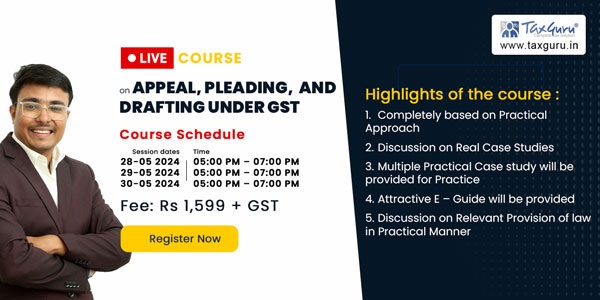“Discover the impact of SAS 300 in promoting education, employability, and livelihoods. Uncover the processes and evaluation methodologies for social auditors, addressing challenges and key metrics. Explore the role of data collection, key questions, and metrics in assessing the social impact. Learn about the challenges and limitations faced during the audit and gain insights into promoting a brighter future through education.”
The third SAS to feature on the list of the 16 SAS is SAS 300, which will become effective once posted by ICAI. This SAS addresses issues that are fundamental to shaping an individual’s life, focusing primarily on education. Without education, employability decreases, and without employment, the chances of leading a decent life are remote. SAS 300 discusses the processes and evaluation methodologies that the Social Auditor (SA) can undertake.
Page Contents
Process of Social Audit
While each SAS might necessitate minor changes in the process of conducting a Social Audit, the overall structure remains the same. All SAS’s provide clear insight into whom the SA should approach during the data collection process for its impact assessment assignment, which may include, but is not limited to:
Data Collection
Possible sources of data include:
- Direct beneficiaries such as students, trainees, participants, attendees.
- Parents/Guardians of direct beneficiaries.
- Faculty/Teachers/Trainers providing education/training.
- Volunteers.
- Management personnel of Education/Training Partners.
- Monitoring Agency.
- Local/Municipal/State/Central Government.
- Other key stakeholders.
- Recruitment Agencies.
- Employers.
- Key Program officials of the reporting entity.
When conducting surveys and collecting sample data, the following factors should be considered to assess relevance and reliability:
- Whether the survey was designed by an in-house team or external specialized agency.
- Whether the survey was conducted by an in-house team or external specialized agency.
- The number of days taken to complete the survey.
- The number of teams formed for data collection.
- The number of personnel deployed.
- The number of villages/districts covered.
- The total distance (in kilometers) covered.
After data collection, the SA should thoroughly review the data, which can include conducting physical inspections and one-on-one interviews to better understand the situation.
The social audit process under this SAS involves the SA asking key questions of themselves and the people involved. These questions form the foundation of the Social Impact Assessment Report. These questions could include:
- Were the program objectives consistent with the composition of the students/trainees?
- How was the quality of the education/training imparted?
- Were the participants engaged and satisfied with the education/training received?
- How was the quality of Parent–Teacher engagement?
- Has the training been beneficial to their present/potential course of study or job?
- Has the access to education/training improved their literacy levels, learning skills, or quality of life?
- Are the participants satisfied with their learning and assessment procedure?
- Has the access to education/training improved employment opportunities in the participants’ areas of interest?
- Are the participants satisfied with their placement?
- What impact did the program have on a person’s life or their family’s life after receiving education/training?
- Has the income of beneficiaries increased after receiving education/training?
- Has the education/training improved the well-being of the participants?

Key Metrics: Framing and Assessment
Depending on the engagement, the SA is required to develop key metrics or performance indicators, which can be compared with the actual performances of the Social Enterprise under audit. These key indices should include both qualitative and quantitative evaluation criteria.
The assessment will prompt the SA to ask pertinent questions, and with the collected data, they will be able to answer these questions. Examples include:
- What would have happened without the intervention?
- How much has the project contributed to the changes that are evidenced in relation to the outputs/outcomes/social objectives that were sought to be achieved?
- Has there been any unintended negative impact due to the intervention?
This assessment will guide the SA towards the final outcome of their report. With all the collected data and key metrics analysis, they will be able to grade the performance of the Social Enterprise based on its Social Impact. Some of these grading questions might include:
- Number of target beneficiaries enrolled/registered in each education/skill development/ vocational/technical reporting period and cumulative since the inception of the program.
- Ratio of female students/women participants to total students/beneficiaries enrolled.
- Number of learning hours i.e., school hours/training hours offered per week.
- Number of beneficiaries who successfully certified/completed their program of choice to total beneficiaries.
- Number of beneficiaries successfully placed to total beneficiaries enrolled/certified.
- Teacher/Trainer attendance rate during the reporting period to assess the quantum of teaching hours delivered.
- Student/Participant attendance rate to assess the quantum of actual learning hours.
- Distribution of student/participant test scores.
- Student transition rate/pass rate i.e., percentage of students advancing from one level of learning to school and going for higher studies.
- Student/participant test scores relative to geographical/demographic/thematic benchmarks (for example, compared to average school scores in municipal schools).
- Highest remuneration and average remuneration received by the successfully placed beneficiaries as benchmarks.
- School Fees/Enrollment Fees charged from students/participants on subsidized basis and comparison with the number of students/participants who are provided partial/total scholarship to total students/beneficiaries enrolled.
- Number of female students/participants who are provided scholarship to total female students/participants enrolled.
- Student–Teacher ratio: Number of students or participants per teacher or trainer.
- Improvement in Economic conditions – Enhanced financial independence and better access to facilities of education/training or placement. Various qualitative indicators may be used to assess the same, such as:
- Availability of different modes of communication like TV, smartphones.
- Ownership of vehicles & domestic utilities.
- Loan repayment/Loan availing facility.
- Access to better health and sanitation facilities.
- Improvement in Social conditions – Improvement in confidence, social skills, social status, and acceptance by neighbors, post completion of education/training as indicated through case studies/interviews/survey-based
- The program helped the youth in becoming self-reliant.
- The program helped in creating earning avenues for future employment.
- Whether the focus on entrepreneurship is covered in the course curriculum to enable the trainees to develop become self-reliant.
- Assessment of skills imparted and development of relevant skills in the students/participants.
During the implementation of any significant initiative, obstacles are likely to emerge. It’s the responsibility of the SA to anticipate these challenges in advance and make necessary adjustments. Common issues related to promoting education, employability, and livelihoods include:
- Lack of qualified teachers/training staff or high levels of attrition.
- Insufficient number of computers and training equipment available for education/training.
- Training on obsolete equipment.
- Residential accommodation not being made available.
- Candidates not being able to finish the education/training due to various problems.
Limitations of the assessment
The Social Auditor should identify the inherent limitations of the evaluation process that might influence the impact assessment. Some examples of such limitations are:
- Non-availability of relevant external data on benchmarks, target beneficiaries, etc.
- Insufficiency of sample covered by questionnaires/surveys or responses not received.
- Inability to identify all key stakeholders.
- Some of the questions being skipped by the respondents and remaining unanswered.
- Non-availability of respondents due to relocation to other places after completion of the course.
- Change in contact details of respondents due to which they could not be contacted.
My Remarks/Conclusion
The SAS mentioned above tackles an area that not only enhances an individual’s present but also their future. It provides a brief overview of the process and challenges in such engagements. The SA will also have to depend on their judgment calls as no two engagements are the same. This SAS covers an area which is also one of the priority segments of the government and as such, room for error in this audit is limited.
As Nelson Mandela once said, “Education is the most powerful weapon which you can use to change the world.”





























